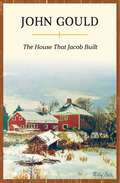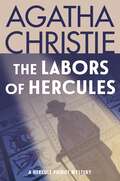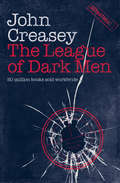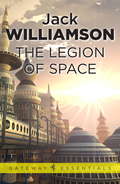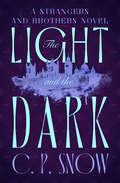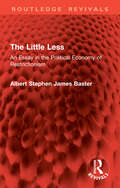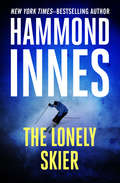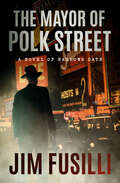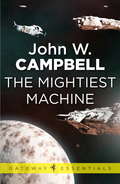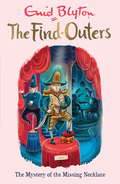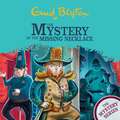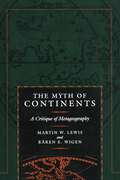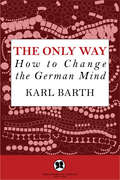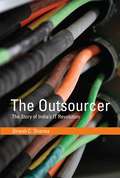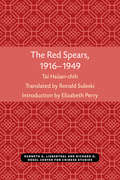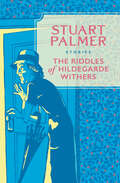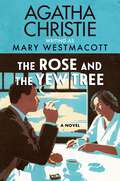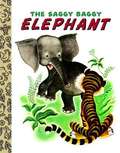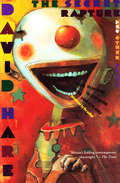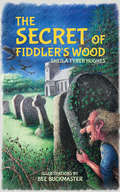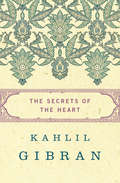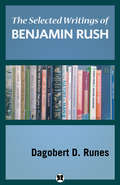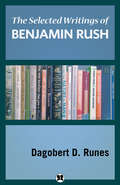- Table View
- List View
The House That Jacob Built
by John GouldIn 1940, the 1780-farmhouse that noted Maine essayist and curmudgeon John Gould&’s great-grandfather built burned to the ground. To honor the generations that came before him, Gould there and then decided to rebuild the house in Lisbon Falls. Like his great-grandfather, Gould cut the timbers from the same woodlot, and the new house rose so smoothly, it seemed as if Great-Grandfather Jacob was building it himself. Memories clung to every beam and rafter and this host of recollections form the substance of this memoir. Woven in are stories of how Gould&’s Grandfather Thomas started the Battle of Gettysburg and all the rich associations of a family whose roots dug deep over five generations.
The Labors of Hercules: A Hercule Poirot Mystery: The Official Authorized Edition (Hercule Poirot Mysteries #25)
by Agatha ChristieIn appearance Hercule Poirot hardly resembled an ancient Greek hero. Yet—reasoned the detective—like Hercules he had been responsible for ridding society of some of its most unpleasant monsters.So, in the period leading up to his retirement, Poirot made up his mind to accept just twelve more cases: his self-imposed 'Labours'. Each would go down n the annals of crime as a heroic feat of deduction.
The League of Dark Men (Department Z #23)
by John CreaseyThe thrilling Department Z series continues as an assassination attempt leads to political turmoil—from the author who sold eighty million books worldwide. Agent Gordon Craigie faces a crisis of international proportions when an attempted assassination of a Russian diplomat at a top-level international conference in London threatens negotiations. Craigie and the Department Z team must work to ensure the safety of all the delegates whilst investigating the attack. It soon becomes increasingly obvious the attack they’re dealing with was run by a highly professional organization and the team is starting to feel out of their depth. Will Department Z be able to match wits with bullets as they attempt to take down the assassins? How will they negotiate the political minefield where one false step could lead to worldwide disaster? “Mr. Creasey realizes that it is the principal business of thrillers to thrill.” —Church Times “Little appears in the newspapers about the Secret Service, but that little makes anything on the subject probable fiction. Mr. Creasey proves himself worthy of the chance.” —The Times Literary Supplement
The League of Dark Men (Department Z)
by John CreaseyThe thrilling Department Z series continues as an assassination attempt leads to political turmoil—from the author who sold eighty million books worldwide.Agent Gordon Craigie faces a crisis of international proportions when an attempted assassination of a Russian diplomat at a top-level international conference in London threatens negotiations.Craigie and the Department Z team must work to ensure the safety of all the delegates whilst investigating the attack. It soon becomes increasingly obvious the attack they’re dealing with was run by a highly professional organization and the team is starting to feel out of their depth.Will Department Z be able to match wits with bullets as they attempt to take down the assassins? How will they negotiate the political minefield where one false step could lead to worldwide disaster?“Mr. Creasey realizes that it is the principal business of thrillers to thrill.” —Church Times“Little appears in the newspapers about the Secret Service, but that little makes anything on the subject probable fiction. Mr. Creasey proves himself worthy of the chance.” —The Times Literary Supplement
The Legion of Space (Gateway Essentials #395)
by Jack WilliamsonThey were the greatest trio of swashbuckling adventurers ever to ship out to the stars! There was giant Hal Samdu, rocklike Jay Kalam and the incomparably shrewd and knavish Giles Habibula. Here is their first thrilling adventure - the peril - packed attempt to rescue the most important person in the galaxy, keeper of the vital secret essential to humanity's survival in the deadly struggle against the incredibly evil Medusae... The Legion of Space is the first self-contained novel in Jack Williamson's epic Legion of Space series, an all-time classic of adventurous science fiction to rank with 'Doc' Smith's Lensman saga and Isaac Asimov's Foundation trilogy.
The Light and the Dark (The Strangers and Brothers Novels)
by C.P. SnowA gifted young academic in 1930s England falls prey to a dangerous mindset in this novel by &“a master craftsman&” (The New York Times). Roy Calvert is young, well-liked, and financially secure. He is also a brilliant scholar at Cambridge, engaged in translating ancient documents related to the Manichaean heresy. Yet despite these advantages and successes, he is prone to an unpredictable, inexplicable melancholy that neither love nor work can seem to overcome. It will pull Roy into the orbit of a rising historical darkness—and leave his friend, Lewis Eliot, to witness the frightening struggle between Calvert and his demons . . .Praise for the Strangers and Brothers Novels &“Mr. Snow has established himself . . . in an eminent and conspicuous position among contemporary English novelists.&” —New Statesman
The Little Less: An Essay in the Political Economy of Restrictionism (Routledge Revivals)
by Albert Stephen BasterAfter the First World War, and partly because of it, nineteenth century capitalism began to be denounced by the critics both of the Left and of the Right- as an unintelligent system for producing too much of everything and for providing for the labour and capital engaged in the process a poor and unsatisfying level of rewards. Some adjustment was clearly called for. By tacit agreement between Left and Right, the various ingenious devices of economic restrictionism were introduced so as to induce people to produce a little less. By 1939, however, the spread of what may be called twentieth century collectivist capitalism began to disturb critiques of the Centre, who could not understand why everybody should expect to get a little more for producing a little less.First published in 1947, The Little Less is intended to clarify the confusion of these claims and counter claims and to propose new economic goals for the post war period which avoid the economic frying pan as well as the fire. This is an important historical reference work for scholars and students of political economy.
The Lonely Skier: The Lonely Skier, Campbell's Kingdom, And The Blue Ice
by Hammond InnesHigh among the Dolomite Mountains, a film crew led by a madman will risk their lives for Nazi gold, in this death-defying thriller. Out of work, out of money, and out of time, Neil Blair is wandering through Piccadilly Circus when he stumbles upon the chance of a lifetime. He meets an old army buddy, a half–con man half-genius film producer, who offers him a job. Suddenly, Blair is off to the Dolomites for three months to work on the script for a film that will be unlike anything the cinema has ever seen: a thriller entirely based in truth, every word steeped in blood. Ostensibly, the film is to be a skiing picture, but Blair soon learns there&’s much more at stake than a bit of sport. Beneath the mountain ice is a fortune in Nazi gold, which the producer will find—or die trying. Blair&’s task is to document that hunt on the page, but he&’s about to be trapped in a battle of wits that could destroy him before he types a single word. Shot through with the atmospheric tension that was Hammond Innes&’s trademark, The Lonely Skier is a terrifying story of murder and deception at the edge of the world.
The Mayor of Polk Street (The Narrows Gate Novels)
by Jim FusilliTwo men in 1940s New Jersey are caught up in organized crime and international intrigue, in this novel by the Edgar nominee and author of Narrows Gate. After a bloody showdown with the mob, grocer Sal Benno is being left in peace—at least for now. But he carries a gun and looks over his shoulder as he goes about his business. Sal&’s lifelong friend, Leo, is also still in the gritty waterfront town of Narrows Gate—for the time being. Unlike Sal, he has a woman in his life and a promising future at CBS across the river, though the Red Scare hangs over the network and threatens his career. Meanwhile, in Sicily, an exiled Mafia boss works to protect his weakened empire from rivals and opportunists, darting around the world as the CIA tries to keep a tail on him. With chaos ruling in the wake of a crackdown on organized crime, the effects are felt from Havana to Hollywood, Las Vegas to Greece—and in the lives of Sal, Leo, and those they love. In this novel that takes readers into back alleys and halls of power, the two must struggle to hold their friendship and their community together, even as they are driven to desperation.Praise for Narrows Gate &“Must be ranked among the half-dozen most memorable novels about the Mob.&” —Mystery Scene &“A uniquely American tale of ambition and failure, of people who underplay their hands and those who overstep their bounds . . . Dazzling.&” —David Liss, Edgar Award–winning novelist &“Equal parts Ellroy, Puzo and Scorsese.&” —George Pelecanos, writer andproducer of The Wire and author of The Night Gardener &“As tender as it is tough . . . A compelling, gritty, and brilliant voice.&” —Lisa Scottoline, New York Times–bestselling author
The Mightiest Machine: Aarn Munro Book 1 (AARN MUNRO)
by John W. CampbellA million light-years from Earth, one solitary spaceship floats through a vast swarm of enemies. The ship was an experimental vessel from Earth that utilised a revolutionary new concept in space mechanics, developed by the near-superman Aarn Munro. The enemy vessels were wholly unknown to Mankind, for the new drive had taken the Terran vessel into an unmapped void, where not even the telescopes of Earth had ever penetrated before...
The Mightiest Machine: Aarn Munro Book 1 (Aarn Munro Ser.)
by John W. CampbellA million light-years from Earth, one solitary spaceship floats through a vast swarm of enemies. The ship was an experimental vessel from Earth that utilised a revolutionary new concept in space mechanics, developed by the near-superman Aarn Munro. The enemy vessels were wholly unknown to Mankind, for the new drive had taken the Terran vessel into an unmapped void, where not even the telescopes of Earth had ever penetrated before...
The Mystery of the Missing Necklace: Book 5 (The Find-Outers #5)
by Enid BlytonThe Find-Outers is a clever mystery series from bestselling author Enid Blyton, and perfect for fans of The Secret Seven. Mr Goon is busy with a mystery all to himself until Fatty, Pip, Larry, Daisy and Bets discover his secret. There is a gang of jewel thieves using Peterswood as their headquarters! Soon the Find-Outers and Buster the dog are helping the police hunt down the thieves - but who are they?In the original 1947 text, Fatty's nickname is based on the fact that his initials are F.A.T. as well as his size. All references to his size have been removed from this recording (based on the text from 2016) so that Fatty's nickname refers to his initials only.Enid Blyton ® and Enid Blyton's signature are registered trade marks of Hodder & Stoughton Limited. No trade mark or copyrighted material may be reproduced without the express written permission of the trade mark and copyright owner.
The Mystery of the Missing Necklace: Book 5 (The Find-Outers #5)
by Enid BlytonA brilliant mystery series from bestselling author Enid Blyton, perfect for fans of The Secret Seven. Mr Goon is busy with a mystery all to himself until Fatty, Pip, Larry, Daisy and Bets discover his secret. There is a gang of jewel thieves using Peterswood as their headquarters! Soon the Find-Outers and Buster the dog are helping the police hunt down the thieves - but who are they?First published in 1947, this audio edition is based on the original text.(P) 2019 Hodder & Stoughton LimitedEnid Blyton ® and Enid Blyton's signature are registered trade marks of Hodder & Stoughton Limited. No trade mark or copyrighted material may be reproduced without the express written permission of the trade mark and copyright owner.
The Myth of Continents: A Critique of Metageography
by Kären E. Wigen Martin W. LewisIn this thoughtful and engaging critique, geographer Martin W. Lewis and historian Kären Wigen reexamine the basic geographical divisions we take for granted, and challenge the unconscious spatial frameworks that govern the way we perceive the world. Arguing that notions of East vs. West, First World vs. Third World, and even the sevenfold continental system are simplistic and misconceived, the authors trace the history of such misconceptions. Their up-to-the-minute study reflects both on the global scale and its relation to the specific continents of Europe, Asia, and Africa--actually part of one contiguous landmass. The Myth of Continents sheds new light on how our metageographical assumptions grew out of cultural concepts: how the first continental divisions developed from classical times; how the Urals became the division between the so-called continents of Europe and Asia; how countries like Pakistan and Afghanistan recently shifted macroregions in the general consciousness. This extremely readable and thought-provoking analysis also explores the ways that new economic regions, the end of the cold war, and the proliferation of communication technologies change our understanding of the world. It stimulates thinking about the role of large-scale spatial constructs as driving forces behind particular worldviews and encourages everyone to take a more thoughtful, geographically informed approach to the task of describing and interpreting the human diversity of the planet.
The Only Way
by Karl Barth"Man has always been ill and always will be." from "How Can the Germans Be Cured?" The Only Way: How to Change the German Mind details author Karl Barth's theories on German politics and history and confronts "the problem with Germany." In successive articles and letters, Barth analyzes the rise of Nazism and Hitler's power to understand German guilt and connect history to present-day Germany. This edition was translated from the German by Marta K. Neufeld and Ronald Gregor Smith. Karl Barth was an influential Swiss philosopher, theologian, and author. He wrote The Epistle to the Romans, Church Dogmatics, The Humanity of God and countless essays, articles, and lectures.
The Outsourcer
by Dinesh C. SharmaThe rise of the Indian information technology industry is a remarkable economic success story. Software and services exports from India amounted to less than $100 million in 1990, and today come close to $100 billion. But, as Dinesh Sharma explains in The Outsourcer, Indian IT's success has a long prehistory; it did not begin with software support, or with American firms' eager recruitment of cheap and plentiful programming labor, or with India's economic liberalization of the 1990s. The foundations of India's IT revolution were laid long ago, even before the country's independence from British rule in 1947, as leading Indian scientists established research institutes that became centers for the development of computer science and technology. The "miracle" of Indian IT is actually a story about the long work of converting skills and knowledge into capital and wealth. With The Outsourcer, Sharma offers the first comprehensive history of the forces that drove India's IT success.Sharma describes India's early development of computer technology, part of the country's efforts to achieve national self-sufficiency, and shows that excessive state control stifled IT industry growth before economic policy changed in 1991. He traces the rise and fall (and return) of IBM in India and the emergence of pioneering indigenous hardware and software firms. He describes the satellite communication links and state-sponsored, tax-free technology parks that made software-related outsourcing by foreign firms viable, and the tsunami of outsourcing operations at the beginning of the new millennium. It is the convergence of many factors, from the tradition of technical education to the rise of entrepreneurship to advances in communication technology, that have made the spectacular growth of India's IT industry possible.
The Red Spears, 1916–1949 (Michigan Monographs In Chinese Studies #54)
by Hsuan-chi Tai Hsuan-chih TaiBefore Tai Hsüan-chih’s work on the Red Spear Society, the subject was a little understood movement that seemed of only passing interest to scholars of China—intriguing for its peculiar beliefs and rituals, perhaps, but hardly of central importance to modern Chinese history. Today, however, thanks in no small measure to the pioneering work of Professor Tai, the Red Spears have gained a secure niche in scholarship on modern China. Their numbers (reaching perhaps some three million participants at the height of the movement) and enduring (lasting intermittently for several decades) should stand as reason enough for the recent scholarly attention. But the Red Spears have generated interest for other reasons as well. As research has developed into the history both of China’s traditional rural rebellions and of her Communist revolution has developed over the past few years, the Red Spears have assumed increasing significance. A movement which bore marked similarities to earlier Chinese uprisings (most notably the Boxers), the Red Spears nevertheless operated in a later period of history (right through the middle of the twentieth century) which brought them in direct contact with Communist revolutionaries. An analysis of the Red Spears thus becomes important both for what it can tell us about longstanding patterns of rural rebellion in China, and for what it suggests about the nature of Chinese revolution.
The Riddles of Hildegarde Withers: Stories (The Hildegarde Withers Mysteries)
by Stuart PalmerA sharp-witted Manhattan schoolteacher tackles eight little mysteries in this collection from the author of The Puzzle of the Happy Holligan. When not teaching third graders, middle-aged singleton Hildegard Withers enjoys sipping orange pekoe tea, reading Sherlock Holmes stories, and tending to her tropical fish. And from time to time, she also helps her friend, Insp. Oscar Piper, with some puzzling cases . . . &“The Riddle of the Lady from Dubuque&”: Miss Withers goes undercover at an affluent dinner party, but murder cuts the evening short. &“The Riddle of the Yellow Canary&”: Hildegarde races to prove a young songwriter&’s death was a homicide and force her killer to face the music. &“The Riddle of the Blue Fingerprint&”: A mahogany wardrobe for sale at a local auction house contains a peculiar surprise: the body of a man Miss Withers was hired to find. &“The Riddle of the Doctor&’s Double&”: A doctor pays a house call to a sick patient on Riverside Drive, but the housekeeper thinks she just let him in, so . . . who is upstairs with her boss? &“The Riddle of the Twelve Amethysts&”: Miss Withers investigates a curious case of blackmail involving packages containing the violet gemstone. &“The Riddle of the Black Museum&”: A baffling locked-room murder sends Miss Withers on a field trip to the NYPD&’s famed collection of apprehended weapons. &“The Riddle of the Green Ice&”: Apartment hunting in New York can be killer, but Miss Withers wasn&’t expecting a robbery and a shooting, too. &“The Riddle of the Snafu Murder&”: After a possible spy uses her name in bars around town, Hildegarde&’s search for answers leads her to a Greenwich Village murder. Her style may be eccentric, but Miss Withers is as clever as they come. If you enjoy reading these cases, be sure to check out any of the full-length mysteries in the series like The Penguin Pool Murder, Murder on Wheels, or Murder on the Blackboard. Praise for the Hildegarde Withers Mysteries &“One of the world&’s shrewdest and most amusing detectives.&” —The New York Times &“Hildegarde Withers remains incomparable and inimitable.&” —Anthony Boucher
The Rose and the Yew Tree: A Novel
by Agatha Christie Mary WestmacottA cautionary tale of social climbing by Agatha Christie, written under the pseudonym Mary Westmacott.Agatha Christie, famous for her ingenious crime novels, also wrote about crimes of the heart. Written under the pseudonym Mary Westmacott, Christie’s tales of romantic suspense further explore the human psychology she was so intrigued by, freed from the expectations of her mystery fans. The Rose and the Yew Tree tells the story of Isabella Charteris, a beautiful, sheltered aristocrat who everyone expected to marry her cousin Rupert when he came back from the War. It would have been such a suitable marriage. How strange then that John Gabriel, an ambitious and ruthless war hero, should appear in her life. For Isabella, the price of love would mean abandoning her dreams of home and happiness forever. For Gabriel, it would destroy his chance of a career and all his ambitions…A favorite of both Agatha Christie and her daughter Rosalind, this story examines the darker side of class divisions and the price of ambition.
The Saggy Baggy Elephant: Classic Edition (Little Golden Book)
by Kathryn Jackson Byron JacksonAfter a parrot makes fun of Sooki's big ears, long nose, and wrinkled skin, the "saggy baggy" elephant isn't too sure of himself. But once he meets some beautiful creatures who look just like him, Sooki celebrates with a joyful "one-two-three-kick." For over 50 years, parents and children have treasured this tale, with gorgeous art by Gustaf Tenggren, the illustrator of The Poky Little Puppy.From the Hardcover edition.
The Secret Rapture and Other Plays: Fanshen - A Map Of The World - Saigon - The Bay At Nice (Books That Changed the World)
by David HareA collection of five plays fromthe Tony Award–winning playwright and screenwriter, &“the premiere political dramatist writing in English&” (The Washington Post). David Hare, &“Britain&’s leading contemporary playwright,&” has established a unique reputation for plays that are at once personal and political, deeply serious and incredibly funny (The Times). He is the author of seventeen plays, many of which have been presented on Broadway. Included in this collection are Fanshen; A Map of the World; Saigon: Year of the Cat; The Bay at Nice; and The Secret Rapture. Of the title play, Frank Rich of The New York Times said, &“The Secret Rapture has gone further than before in marrying political thought to the compelling drama of lives that refuse to conform to any ideology&’s utopian plan . . . Mr. Hare embraces the human, messy though it may be.&” Praise for David Hare Fanshen &“The nearest any English contemporary writer has come to emulating Brecht.&” —Financial Times A Map of the World &“Mr. Hare&’s A Map of the World, which passionately embraces utopia without arrogantly presuming to annex it, is original and provocative.&” —The New York Times Saigon &“An impressive new film which vividly captures the last desperate days in Vietnam as the Reds laid siege to the sweltering city.&” —Daily Express The Bay at Nice &“Witty, cerebral, and full of fine-spun ironies.&” —The Guardian The Secret Rapture &“His writing, as always, is smart, and this time, glorious. The characters are unhackneyed and complex; the insights are tough and hard to ignore.&” —New York Newsday
The Secret of Fiddler's Wood: -
by Sheila Tyrer HughesFor years, the people of Willowbridge have lived with strange goings-on in and around Fiddler's Wood, and for years, they have tried to ignore the ugly birds that watch them and the castle that comes and goes. But all that changes when Barney Witherspoon comes to live at Fiddler's End. He makes friends with Midge and together they determine to solve the mystery of the ancient wood. They don't bargain for the stone mason boggart who knows no loyalty and will serve anyone for a bowl of sweet bread and milk, but when Septimus Knott points them towards the castle, there is no turning back, and the secret of the wood is bigger than anything they can imagine.
The Secrets of the Heart
by Kahlil GibranAn early collection of Kahlil Gibran&’s writings, showcasing the many styles of this prolific thinker, all profoundly beautiful Kahlil Gibran reveals his vision of the soul and understanding of the world—past, present, and future—in this rich sampling of more than twenty works. Prose tales, fables, and poems evoke the mystic East and form a world at once powerful, tender, joyous, and melancholy. This collection, penned when Gibran was still a young writer, reveals many of the themes and styles plumbed throughout his life, including his lifelong struggle against injustice in &“The Crucified,&” his heart-wrenching lament for a Lebanon shackled by tradition and politics in &“My Countrymen,&” and his masterful use of symbolism and simile in &“The Secrets of the Heart.&” A writer with infinite abilities, Gibran continually seeks true beauty, no matter the form.
The Selected Writings of Benjamin Rush
by Dagobert D. RunesBenjamin Rush was a Founding Father of the United States. He lived in Pennsylvania and was a physician, writer, educator, humanitarian and devout Christian, as well as the founder of Dickinson College in Carlisle, Pennsylvania. Rush was a signatory of the Declaration of Independence and attended the Continental Congress. Later in life, he became a professor of medical theory and clinical practice at the University of Pennsylvania. Despite having a wide influence on the development of American government, he is not as widely known as many of his American contemporaries. Rush was also an early opponent of slavery and capital punishment. Despite his great contributions to early American society, Rush may be more famous today as the man who, in 1812, helped reconcile the friendship of Thomas Jefferson and John Adams by encouraging the two former Presidents to resume writing to each other. The editor of the preface of this book gives an in-depth look into Benjamin Rush's life. The writings of Rush, which are contained in this book, show a wide range of interest and knowledge embracing agriculture and the mechanical arts, chemistry and medicine, political science, and theology. Included are letters he wrote in an effort to dispel prejudice, to fight oppression, and to elevate the lot of the lowly.
The Selected Writings of Benjamin Rush
by Dagobert D. RunesThis volume of letters, articles, and speeches displays the deep wisdom and varied concerns of this influential yet little-known Founding Father. A physician and humanitarian from Pennsylvania, Benjamin Rush was both a learned intellectual and a radical revolutionary. He was a signatory to the Declaration of Independence and a Continental Congress attendee. And unlike many of his more famous contemporaries, he was a early and vehement opponent of slavery and the death penalty. This collection of Rush&’s writings shows a wide range of interest and knowledge embracing agriculture and the mechanical arts, chemistry and medicine, political science, and theology. Included are letters he wrote in an effort to dispel prejudice, to fight oppression, and to elevate the lot of the lowly.
